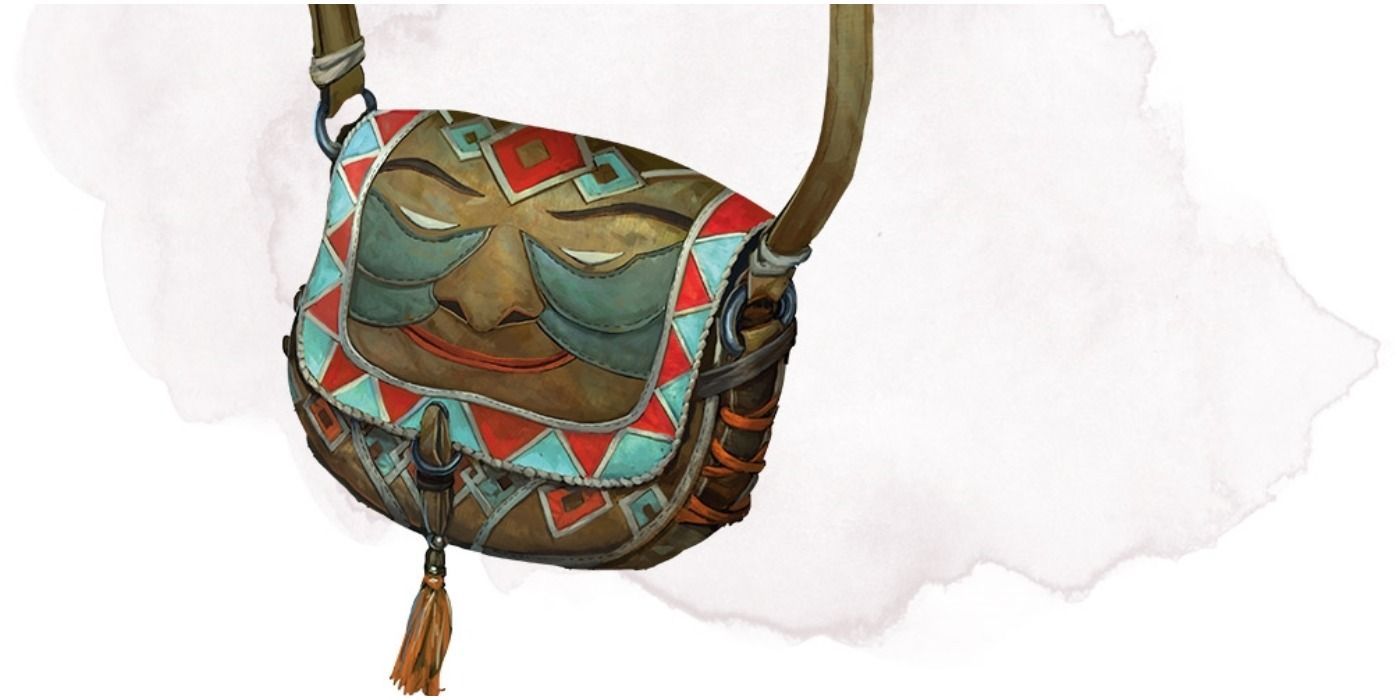Dungeons & Dragons is a game filled to the brim with gameplay mechanics to reflect various elements of adventuring. Only enforced by some Dungeon Masters due to its status as optional, Encumbrance (or Carrying Capacity) is a rule in D&D that’s used to determine if a character is capable of reliably traveling with their inventory without being weighed down or hampered in some way.

Related
Dungeons & Dragons: How To Level Up Your Bastion
Leveling up your bastion in Dungeons & Dragons can be a rewarding, yet complex process. Here’s everything you need to know.
Though this rule is optional, it is frequently used by DMs aiming to emulate realism within their campaign, putting an emphasis on inventory management. So for DMs considering utilizing this rule in a campaign and for players within campaigns in which this rule is applicable, we’re going to explore everything you need to know about Encumbrance in Dungeons & Dragons.
Updated January 29, 2025 by Jack Filsinger: With the release of the 2024 Player’s Handbook, several rules have shifted regarding Encumbrance and Carrying Capacity in D&D. We’ve updated this guide to include the 2024 rules for Carrying Capacity and how it’s calculated, as well as clarified variant rules for Encumbrance in 5e.
How To Calculate Carrying Capacity
Before we tackle exactly how Encumbrance functions, it’s important to know how Carrying Capacity functions in D&D. Carrying Capacity simply dictates how much a character is capable of lifting, and it’s rather easy to calculate.
Additionally, some species, such as bugbears, are capable of lifting twice their Carrying Capacity, allowing them to reliably lug around the heaviest of objects.
Carrying Capacity can vary based on a number of different factors, including whether you’re carrying the weight, or dragging, lifting, and pushing the weight. The amount you can carry also depends on your size.
To calculate Carrying Capacity, refer to the below chart.
|
Creature Size |
Carry Capacity |
Drag/Lift/Push Capacity |
|---|---|---|
|
Tiny |
Strength x 7.5 lb. |
Strength x 15 lb. |
|
Small/Medium |
Strength x 15 lb. |
Strength x 30 lb. |
|
Large |
Strength x 30 lb. |
Strength x 60 lb. |
|
Huge |
Strength x 60 lb. |
Strength x 120 lb. |
|
Gargantuan |
Strength x 120 lb. |
Strength x 240 lb. |
What Is Encumbrance?
Encumbrance is a condition in Dungeons & Dragons that occurs if you begin to exceed your Carrying Capacity. There are a handful of consequences that can occur if you exceed your Carrying Capacity, and these can vary depending on your table’s rules.
What Happens If You Exceed Your Carrying Capacity?
According to the 2024 Player’s Handbook, if you exceed your Carrying Capacity, or are pushing weight in excess to the amount you can reasonably move, your speed is reduced to five feet.
The 2024 Player’s Handbook does not refer specifically to Encumbrance. Instead, it only refers to Carrying Capacity and what happens if you exceed it. Refer to the Rules Glossary to learn more.
This is the only consequence listed in the 2024 Player’s Handbook for exceeding Carrying Capacity. However, this can prove a steep punishment in combat scenarios, so it’s best to avoid it.
What Happens If You Are Encumbered?
Many tables like to play with variant rules for Encumbrance in addition to or even in lieu of Carrying Capacity. In campaigns using this rule, there are two types of Encumbrance to keep track of, Encumbrance and Heavy Encumbrance.
Before making any decisions based on the possibility of Encumbrance, talk to your DM to see if they plan on using these variant rules.
Encumbrance is experienced when a character is carrying an amount of weight that exceeds five times a character’s strength score. When encumbered, a character isn’t capable of maneuvering optimally, and their movement speed is reduced by ten.
For example, if a character with a Strength ability score of ten was carrying fifty-five pounds worth of gear, they would be considered encumbered.
At the more extreme end of Encumbrance, a character who is carrying an amount of weight between ten times a character’s strength score and that character’s maximum Carrying Capacity is considered Heavily Encumbered.
Not only is their movement speed reduced by 20, but that character makes all ability checks, attack rolls, and saving throws that use Strength, Dexterity, or Constitution at disadvantage.
This can be incredibly punishing and applies significant pressure on players to not carry an excessively heavy inventory.
Some tables even use variant rules for being very Heavily Encumbered, meaning you are carrying weight over 15 times your Strength score. If this happens, your speed drops to zero feet and you automatically fail ability checks, attack rolls, and saving throws that use Strength, Dexterity, or Constitution.
While Strength is often considered to be one of the less integral ability scores for many classes, in campaigns using Encumbrance, this ability score is notably more important.
As some players believe that classes like barbarian and fighter lack utility outside of combat, this additional use for Strength provides these classes with an additional advantage.
How To Subvert Encumbrance
Due to the punishing penalties that come along with being Encumbered or exceeding your Carrying Capacity and the often unpopular views of this mechanic, many players seek out means of subverting it.
How To Subvert Encumbrance Non-Magically
If you’re playing a non-magic class, there’s one surefire way to subvert Encumbrance: purchase steeds or other pack animals.
Talk to your DM to see if they will allow steeds or other animal companions to travel with your party.
If you’re in a large settlement or even near a farmstead, seek out aid from NPCs and see if you can purchase a mule or horse to help with your Carrying Capacity.
How To Subvert Encumbrance Magically
As spellcasters often feel the impact of Encumbrance the most due to their often low strength scores, there are various spells and magical items that can at least help mitigate Encumbrance.
Exclusive to the wizard class, Tenser’s Floating Disk is a first-level ritual spell capable of creating a floating platform that automatically follows its caster for one hour. As this platform is capable of supporting up to 500 pounds, it can easily contain anything a frailer wizard would otherwise want to carry.
This allows a wizard to simply put the contents of their inventory on this disk as they travel rather than carrying heavy items on their immediate person.
Additionally, as this spell may be cast as a ritual, it can be repeatedly cast at the end of each hour without requiring the caster to expend a spell slot.
Furthermore, this spell’s status as a ritual makes it accessible to a character of any class as long as they take the Ritual Caster feat.
Paladins can also cast the spell Find Steed and subvert Encumbrance magically in the same way that non-magic users can. However, this spell takes ten minutes to cast, and be careful not to accidentally dispel it with all your gear attached!
Magic Items That Subvert Encumbrance
Alternatively, there are several magic items capable of helping a character get around Encumbrance.
While the Gauntlets of Ogre Power and the Belt of Giant Strength are both items that can set an attuned creature’s Strength score to a higher value, no item allows a character to laugh at Encumbrance quite like a Bag of Holding.
A Bag of Holding is capable of storing up to 500 pounds worth of content through an extradimensional space, regardless of how full this bag is, it never increases in size and always weighs 15 pounds.
This means that not only can a character with a Bag of Holding carry around five hundred pounds worth of inventory, but they are capable of doing so compactly and subtly.
Bags of Holding are so useful for bypassing Encumbrance that many players consider them an essential item for any adventuring party.

Next
Dungeons & Dragons: Which Equipment Pack Should You Choose?
With so many choices, we’ll help you determine which equipment pack is best for you.
















Leave a Reply